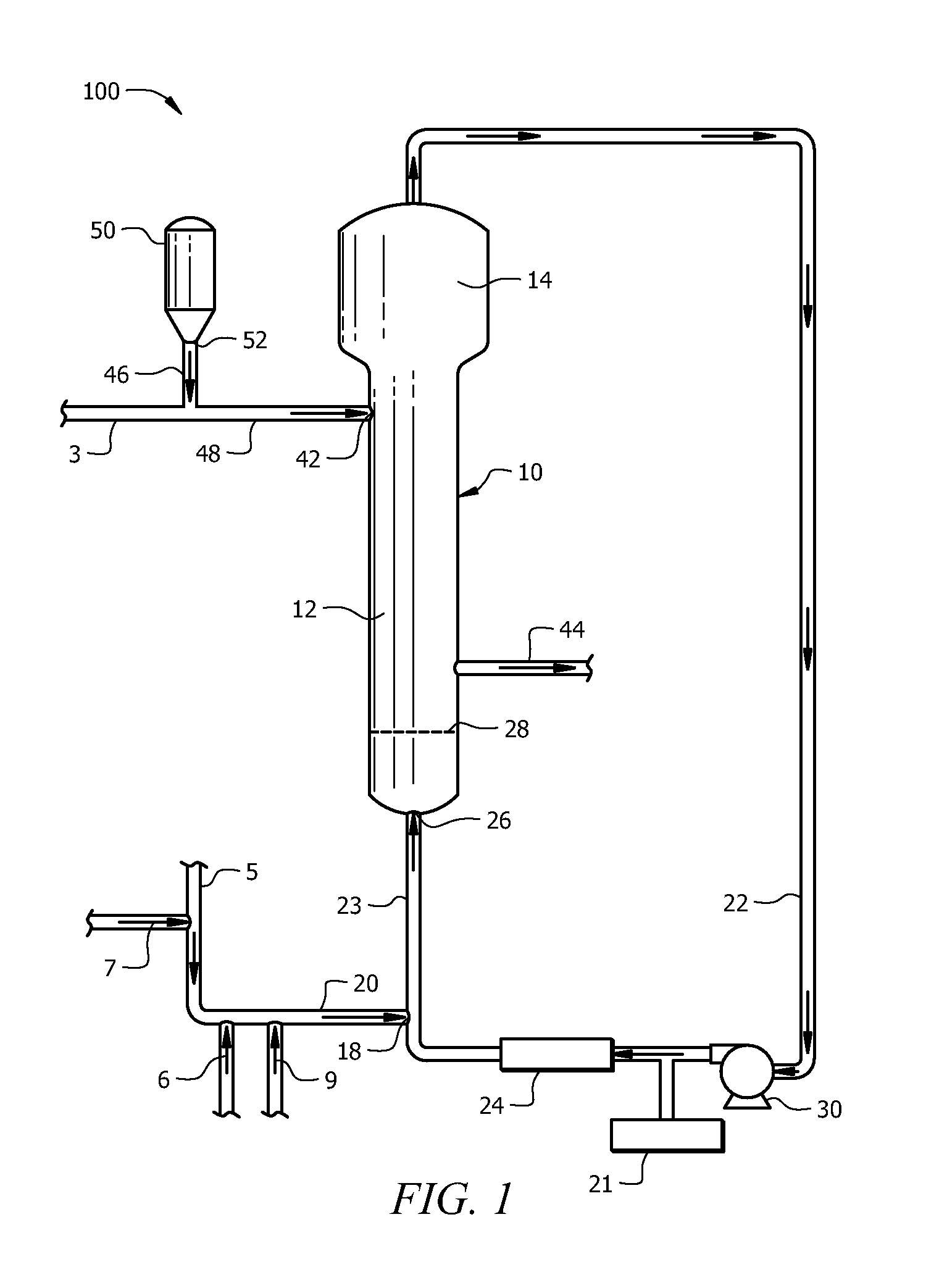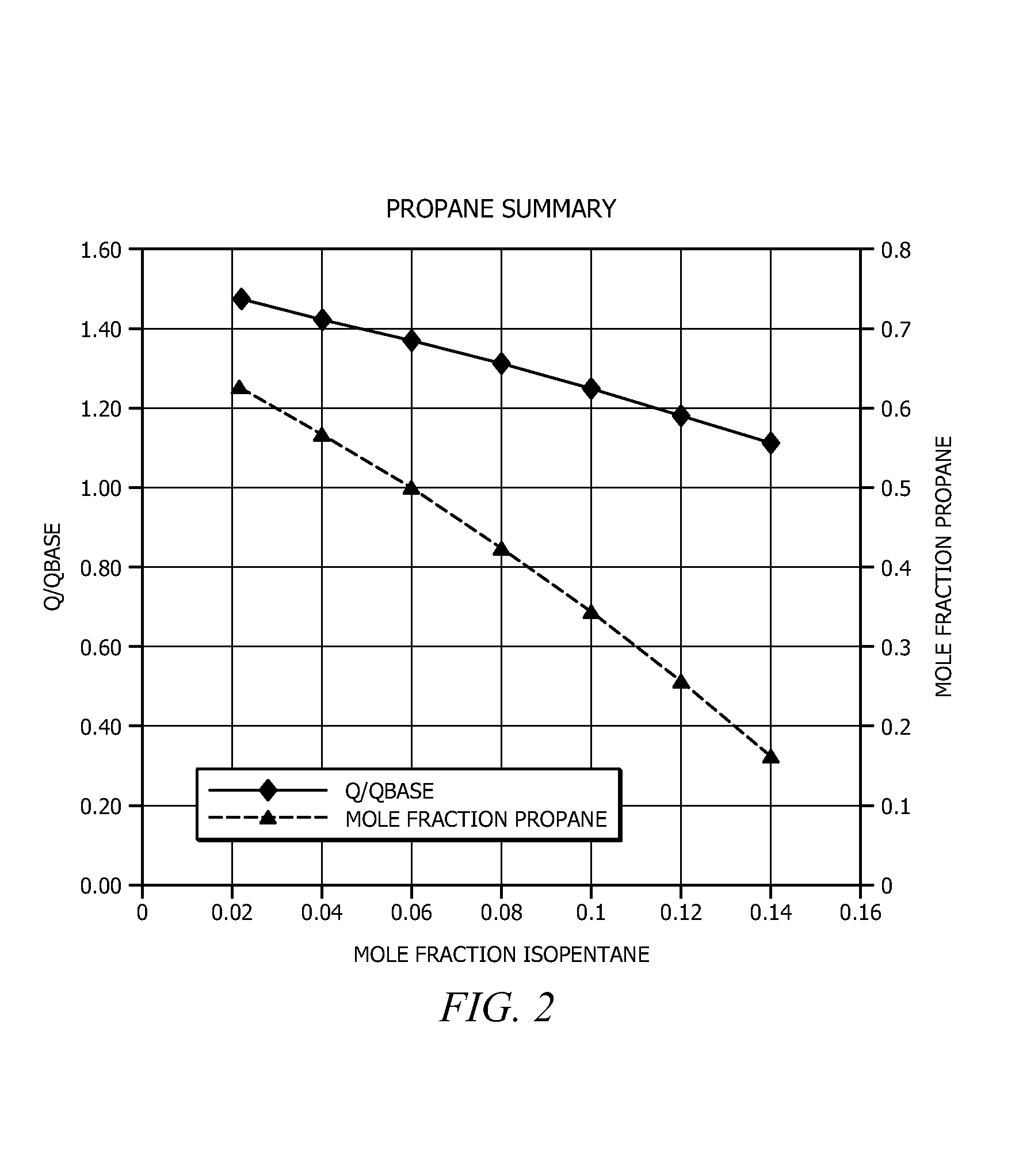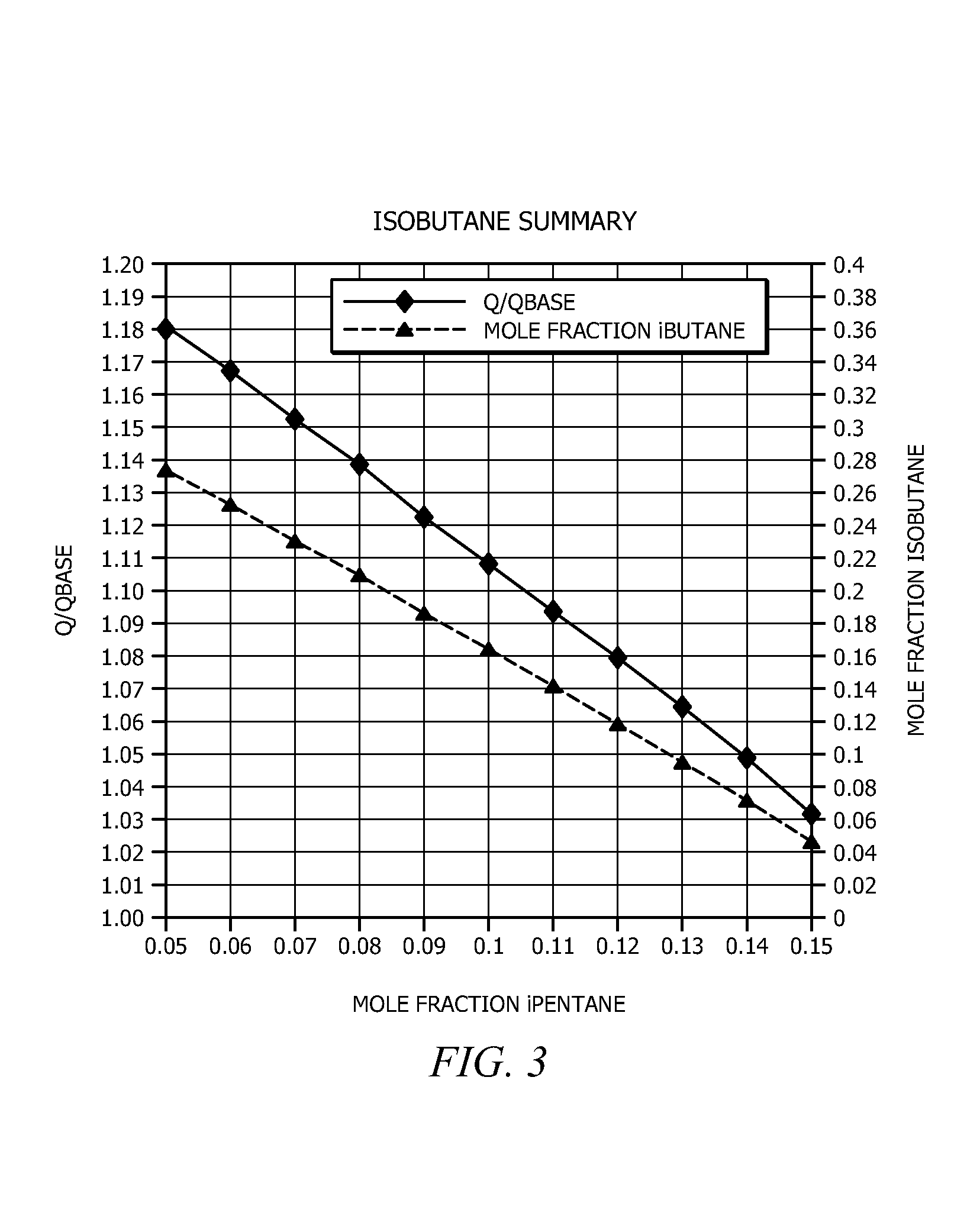Method for operating a gas phase polymerization reactor
a gas phase polymerization and reactor technology, applied in the field of gas phase polymerization reactions, can solve the problems of fluidized bed instability, the rate at which the heat of the polymerization reaction can be removed is a capacity limitation, and the fluid pooling in the bottom head of the reactor, so as to increase the heat capacity and molecular weight of the catalyst conveying, increase the production rate, and increase the effect of heat removal ra
- Summary
- Abstract
- Description
- Claims
- Application Information
AI Technical Summary
Benefits of technology
Problems solved by technology
Method used
Image
Examples
example 1
[0052]The following examples were calculated using a process simulator (AspenPlus) for a polyethylene reaction. The examples illustrate the effect of replacing nitrogen with an alternate inert fluid having a higher heat capacity and higher molecular weight than nitrogen to enhance the heat removal capabilities and thereby allow higher production rates for a given reactor configuration. Examples of alternate inert fluids are listed in Table 1 below. The fluidization gas velocity, reactor temperature, reactor pressure, reactor inlet stream temperature, and weight percent condensate in the reactor inlet stream were all held constant at 2.2 ft / s, 210° F., 315 psia, 110° F., and 17.4 weight percent, respectively, and at a constant ethylene concentration of 0.35 mole fraction for all example cases.
[0053]A commercial steady state simulation software called Aspen Plus®, provided by Aspen Tech, was used to calculate the recycle gas heat removal capability for each example. The thermodynamic ...
PUM
| Property | Measurement | Unit |
|---|---|---|
| density | aaaaa | aaaaa |
| temperatures | aaaaa | aaaaa |
| density | aaaaa | aaaaa |
Abstract
Description
Claims
Application Information
 Login to View More
Login to View More - R&D
- Intellectual Property
- Life Sciences
- Materials
- Tech Scout
- Unparalleled Data Quality
- Higher Quality Content
- 60% Fewer Hallucinations
Browse by: Latest US Patents, China's latest patents, Technical Efficacy Thesaurus, Application Domain, Technology Topic, Popular Technical Reports.
© 2025 PatSnap. All rights reserved.Legal|Privacy policy|Modern Slavery Act Transparency Statement|Sitemap|About US| Contact US: help@patsnap.com



